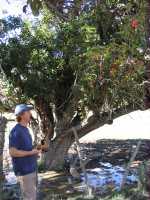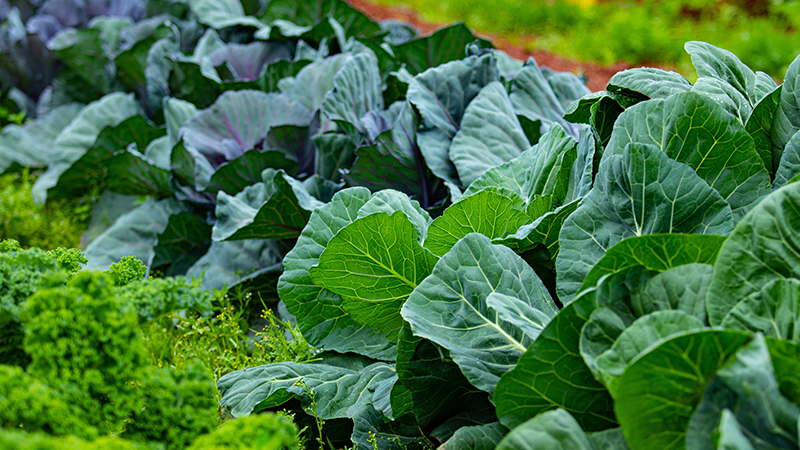Orchard Revival

“Colorado apples” isn’t a phrase you hear too often, at least not anymore. But in the late 19th and early 20th centuries, the southwest Colorado landscape was much different, renowned for its vigorous and diverse orchards. Varieties from the state even won two gold medals in the 1904 World’s Fair in St. Louis, according to Jude Schuenemeyer, owner of Let It Grow Nursery and Garden Market in Cortez, CO. Now, Schuenemeyer and his wife, Addie, are working to preserve and restore the region’s rich fruit-growing history.
“I could probably rattle on about this all day. I’ve been known to,” Schuenemeyer says of his Montezuma Orchard Restoration Project. The thing is, you sort of want him to, because it’s just so interesting.
It started when he and Addie first got into the nursery business about 10 years ago. They bought a nursery that had been in business for about 50 years and had a lot of older clientele, who would often ask the Schuenemeyers about old apple varieties they remembered enjoying as children. “One specifically was called a Yellow Transparent,” Schuenemeyer says. “It’s not that rare of a tree anymore, but it’s not one you’re going to see at a box store, either. We were able to find one and potted it up for her, and one thing led to another, and people kept telling us about these old trees.”
Schuenemeyer estimates that at least 1,000 100-year-old or older trees still stand in Montezuma County, and some of them are in remarkably good shape for their age. “We know what some of the trees are, but some of them we don’t,” he says. One of the goals of the Montezuma Orchard Restoration Project is to find out, and to bring some of these much-loved old varieties back into production.
A Rich History
The Schuenemeyers’ current farm is located in what was once a significant fruit-growing part of McElmo Canyon, where families settled from Tennessee, Maine, and other parts of the country, bringing their fruit varieties with them. The area turned out to be an ideal spot for fruit growing, thanks to a high shelf, probably 500 to 1,000 feet, above the city of Cortez, Schuenemeyer says, from which cold air drifts off, slides down, and creates a nice thermal band. The dry climate helps stave off common diseases like scab, rust, and fire blight. “Most of the things that kill apples seem to be diseases of humidity, and we just don’t have that,” Schuenemeyer says.
And, because the trees were sourced from so many different places, the diversity of the varieties in the county, Schuenemeyer says, is amazing. “The other thing that’s so interesting about Montezuma County is the amount of people whose parents and grandparents planted these trees,” he says. “You have this direct oral history with them. They know what the trees are because they grew up with them. They’ve known them their whole life.”
The Downfall And Rebirth
So, what happened to make tree fruit production come to a halt in the region? “That’s the million dollar question,” says Schuenemeyer. Part of it, he believes, is that as older generations of growers died, no one was there to pick up where they left off. Others have told Schuenemeyer that quality standards dropped, and around the same time Washington state came online with a strong marketing campaign. In addition, the area is relatively isolated, far from major interstates, and as the railroad system dwindled in favor of trucking, it became difficult for growers to ship their fruit cost effectively.
But, a revival is on the horizon, and the Schuenemeyers are determined to save as much of these rare genetics as possible before it’s too late. “For a lot of these varieties, we’re down to the last tree,” Schuenemeyer says.
In an effort to preserve the history, the Schuenemeyers host workshops in the old orchards to teach people pruning and grafting techniques, as well as to map the orchards to discover what varieties are growing there. Schuenemeyer says he hopes the workshops continue to grow and that more people learn to graft and prune so they can help with the Montezuma Orchard Restoration Project. “We’ve got people who will show up for an orchard workshop out at one of these historic orchards, and then they’ll adopt the orchard and start helping the owners take care of the orchard, which is such a sweet thing for me to see happen,” he says.
Schuenemeyer also hopes to develop a market for the fruit grown in the region, which means ongoing education about not just grafting and pruning, but grading and handling standards, too. “We’ve got to get local fruit back into the grocery stores again,” he says. “But to get that to happen, you’ve got to have all those produce handling quality standards the stores are looking for. Otherwise, they’re stuck with a lot of fruit nobody will buy.” He adds that he is acutely aware that creating a market for the fruit is a critical to continuing the project and saving the trees.
“Part of our goal is to save the genetics, and part of our goal is to save the living history that goes with these trees,” Schuenemeyer says. “The histories in many ways are as important as the trees themselves.”










